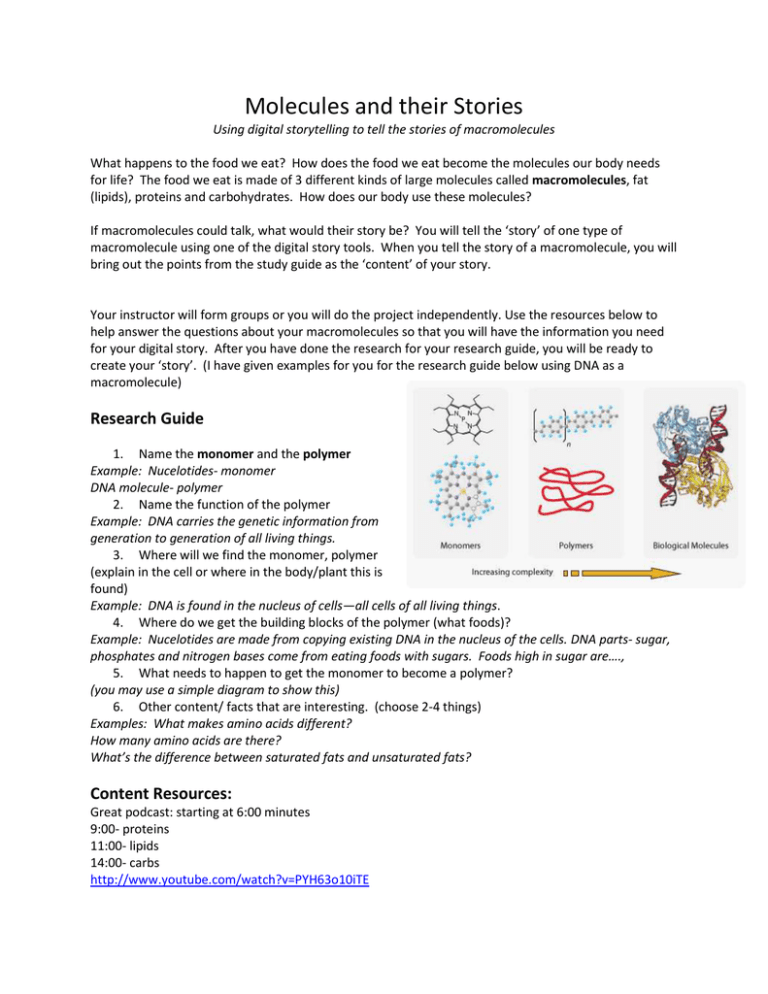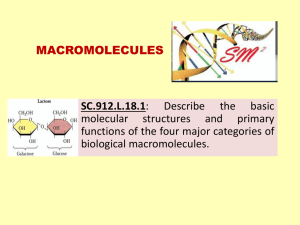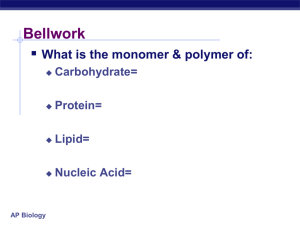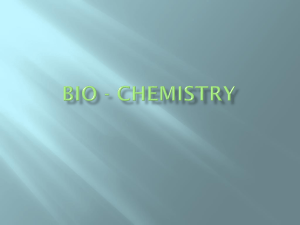Research Guide - WordPress.com
advertisement

Molecules and their Stories Using digital storytelling to tell the stories of macromolecules What happens to the food we eat? How does the food we eat become the molecules our body needs for life? The food we eat is made of 3 different kinds of large molecules called macromolecules, fat (lipids), proteins and carbohydrates. How does our body use these molecules? If macromolecules could talk, what would their story be? You will tell the ‘story’ of one type of macromolecule using one of the digital story tools. When you tell the story of a macromolecule, you will bring out the points from the study guide as the ‘content’ of your story. Your instructor will form groups or you will do the project independently. Use the resources below to help answer the questions about your macromolecules so that you will have the information you need for your digital story. After you have done the research for your research guide, you will be ready to create your ‘story’. (I have given examples for you for the research guide below using DNA as a macromolecule) Research Guide 1. Name the monomer and the polymer Example: Nucelotides- monomer DNA molecule- polymer 2. Name the function of the polymer Example: DNA carries the genetic information from generation to generation of all living things. 3. Where will we find the monomer, polymer (explain in the cell or where in the body/plant this is found) Example: DNA is found in the nucleus of cells—all cells of all living things. 4. Where do we get the building blocks of the polymer (what foods)? Example: Nucelotides are made from copying existing DNA in the nucleus of the cells. DNA parts- sugar, phosphates and nitrogen bases come from eating foods with sugars. Foods high in sugar are…., 5. What needs to happen to get the monomer to become a polymer? (you may use a simple diagram to show this) 6. Other content/ facts that are interesting. (choose 2-4 things) Examples: What makes amino acids different? How many amino acids are there? What’s the difference between saturated fats and unsaturated fats? Content Resources: Great podcast: starting at 6:00 minutes 9:00- proteins 11:00- lipids 14:00- carbs http://www.youtube.com/watch?v=PYH63o10iTE ppt. structure and putting macromolecules together: http://www.google.com/url?sa=t&rct=j&q=&esrc=s&source=web&cd=1&ved=0CC0QFjAA&url=http%3A %2F%2Fwww.biologyjunction.com%2FMacromolecules1.ppt&ei=WRbT5fGJujc2QWxi_iLDw&usg=AFQjCNFBb3MvqdVtosQ2jZDMNLsw5tIGw&sig2=KFPO1aie2D5k9d_iqKBGVA Function and where do they come from ppt: http://www.google.com/url?sa=t&rct=j&q=&esrc=s&source=web&cd=2&ved=0CDQQFjAB&url=http%3 A%2F%2Fteacherweb.com%2FMD%2FRiverHill%2FLower%2FMACROMOLECULES.ppt&ei=WRbT5fGJujc2QWxi_iLDw&usg=AFQjCNGMyOOY3dSaqFf5NGpuAMosxHQKIg&sig2=kXMZljt5m3fZUsZxkZGb MA Proteins: http://www.wisc-online.com/objects/ViewObject.aspx?ID=AP13304 All: http://www.biology.arizona.edu/biochemistry/problem_sets/large_molecules/02t.html http://chemed.chem.wisc.edu/chempaths/GenChem-Textbook/Molecules-In-Living-Systems-703.html You MAY choose other biological molecule resource sources. Please copy the url of every resource and add it to the end of your story. Digital Story Tools: http://cogdogroo.wikispaces.com/StoryTools Tips: Choose a story tool. I strongly suggest a presentation tool or time line tool. Favorites are the peach You may want to ‘take on’ the persona of a more experienced polymer talking to a monomer about life. You need not pay for an account. The free version will work fine. Use the grading rubric to see an explanation of grading.





